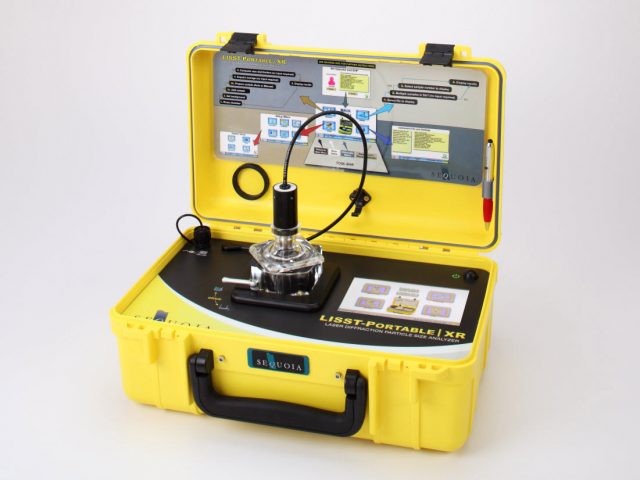 January’s featured paper is here! Lepage H, Masson M, Delanghe D, Le Bescond C (2019): Grain Size Analyzers: Results of an Intercomparison Study. SN Applied Sciences (2019) 1:1100 |
January’s featured paper is here! Lepage H, Masson M, Delanghe D, Le Bescond C (2019): Grain Size Analyzers: Results of an Intercomparison Study. SN Applied Sciences (2019) 1:1100 |
Tl;dr: No instrument in particular stood out as better or worse. But you probably shouldn’t compare data from different instruments if you used ultrasound for particle dispersion.
This paper compares Sequoia’s LISST-Portable|XR with three other commercially available laser particle sizers frequently used for laboratory work: A Beckman Coulter LS 13,320; a Cilas 1190L; and a Malvern MasterSizer 2000. Comparisons focused on
- particle size distribution
- proportion of clay, silt and sand
- the effect of using ultrasound on a sample in order to disperse it.
Measurements were performed on a set of standardized samples created from certified reference materials (CRM) and sediment samples from the Rhone River, France.
For the size distribution and the proportion of clay, silt and sand, Lepage et al. found that all instruments estimated the median diameter (d50) for particle-sizes above 10 µm within 10 % uncertainty. However, for samples mostly characterized by clay and fine silt particles, the d50 was overestimated by 6-68 %. They found that none of the devices accurately characterized clay (this is well-known for all laser diffraction instruments). Also observed was a higher relative difference between the real and observed clay fraction when the clay proportion was lower than ~10 %. All devices accurately characterized samples where any size class (e.g. silt or sand) was missing and did not ‘create’ particles in that particular size class. No instrument particularly stood out as generally better or worse regarding these aspects.
However, the effect of ultrasonic treatment yielded curious results: Data from the Beckman Coulter showed absolutely no effect from sonification (d50 was unchanged), while data from the three others showed d50 decreasing to varying degrees – sometimes by more than 50 %. Lepage et al. concludes that results from different laser particle sizers should not be directly compared when ultrasound is used. This is the first time we here at Sequoia has seen a study that looks at the effect of ultrasound between different ultrasonic devices. The differences really are striking, and it is absolutely something to be aware of for any particle size application.
We would also like to note that the results regarding approximately 10 % uncertainty in the particle size for the > 10 µm particles was to be expected: All instruments are laser diffraction based, so they should all show roughly the same results. As for the discrepancies in the clay fraction, a seminal paper published by Konert & Vandenberghe in 1997 in the journal Sedimentology compared laser diffraction with the pipette and sieve methods. They describe and explain these differences for the clay fraction in VERY well-researched detail. Hint: It is because clay particles are platy and not spherical, as assumed by laser diffraction. If you only read two papers in 2020 on particle sizing it should really be our featured paper by Lepage et al. and Konert & Vandenberghe’s 1997 paper.